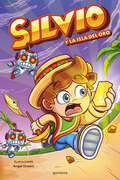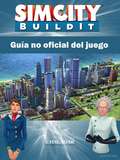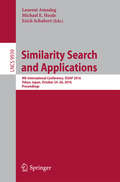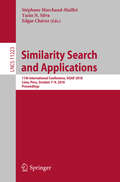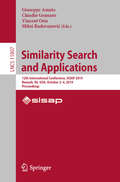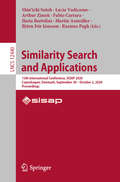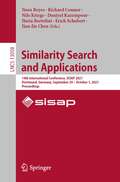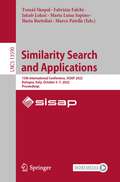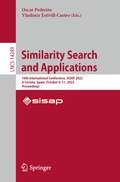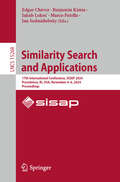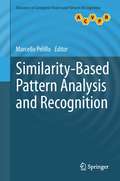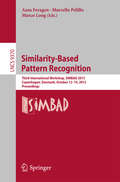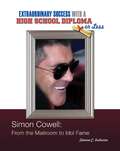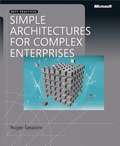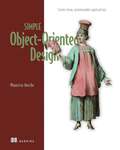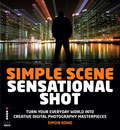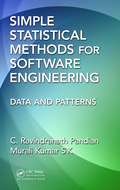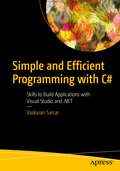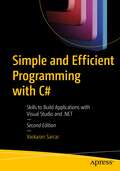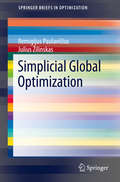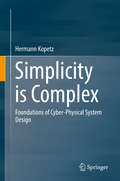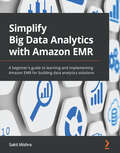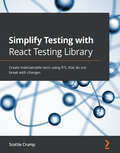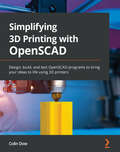- Table View
- List View
Silvio y la isla del oro
by Silvio Gamer¡Llega la nueva aventura de Silvio Gamer, el youtuber que arrasa en las redes! ¡SILVIO Y SUS AMIGOS HAN ENCONTRADO LA MEJOR ISLA DEL MUNDO! Es una isla perdida llena de linotes de oro puro. Pero... ¿por qué hay peligrosos robots que los persiguen? Silvio tendrá que ser el más rápido si quiere conseguir el oro antes de que los robots acaben con él. Pero hay un problema... ¿Dónde se han metido todos sus amigos?¡Apúntate a esta aventura y explora todos los rincones de la isla de oro!
Sim City Buildit Guía no oficial del juego
by Hiddenstuff Entertainment Cristian García HerreroCon mi Guía de Juego aprenderás exactamente lo que necesitas saner para convertirte en un jugador experto, ¡y conseguir montones de recursos para construir la ciudad definitiva! Esta es una guía completa con todo lo que debes saber acerca del juego. - Vista General e Información Básica. - Consejos Profesionales y Estrategias. - Cómo Conseguir Montones de Dinero. - Cómo Construir correctamente Tu Ciudad. - Instrucciones Detalladas y Fáciles. - Secretos, Consejos, Trampas, Desbloqueables, y ¡Trucos Usados Por Jugadores Pro! - ¡Y MUCHO MÁS! ¡Compra ahora y aplasta a tus enemigos! ¡Conviérte en un Jugador Pro hoy mismo! Advertencia: Este producto no está asociado, afiliado, promocionado, certificado, o patrocinado por EA Games. Esta guía ha de ser usada simplemente como referencia y como tal no modifica el juego en manera alguna. Esto es una guía escrita y no un programa de software.
Similar Languages, Varieties, and Dialects: A Computational Perspective (Studies in Natural Language Processing)
by Marcos Zampieri Preslav NakovSimilarity Search and Applications
by Laurent Amsaleg Michael E. Houle Erich SchubertThis book constitutes the proceedings of the 9th International Conference on Similarity Search and Applications, SISAP 2016, held in Tokyo, Japan, in October 2016. The 18 full papers and 7 short papers presented in this volume were carefully reviewed and selected from 47 submissions. The program of the conference was grouped in 8 categories as follows: graphs and networks; metric and permutation-based indexing; multimedia; text and document similarity; comparisons and benchmarks; hashing techniques; time-evolving data; and scalable similarity search.
Similarity Search and Applications: 11th International Conference, SISAP 2018, Lima, Peru, October 7–9, 2018, Proceedings (Lecture Notes in Computer Science #11223)
by Edgar Chávez Stéphane Marchand-Maillet Yasin N. SilvaThis book constitutes the refereed proceedings of the 11th International Conference on Similarity Search and Applications, SISAP 2018, held in Lima, Peru, in October 2018.The 16 full papers presented together with 3 short papers and 1 demonstration paper were carefully reviewed and selected from 31 submissions. The papers deal with issues surrounding the theory, design, analysis, practice, and application of content-based and feature-based similarity search. They are organized in the following topical sections: metric search; visual search; nearest neighbor queries; clustering and outlier detection; graphs and applications; and shared session SISAP and SPIRE.
Similarity Search and Applications: 12th International Conference, SISAP 2019, Newark, NJ, USA, October 2–4, 2019, Proceedings (Lecture Notes in Computer Science #11807)
by Giuseppe Amato Claudio Gennaro Vincent Oria Miloš RadovanovićThis book constitutes the refereed proceedings of the 12th International Conference on Similarity Search and Applications, SISAP 2019, held in Newark, NJ, USA, in October 2019. The 12 full papers presented together with 18 short and 3 doctoral symposium papers were carefully reviewed and selected from 42 submissions. The papers are organized in topical sections named: Similarity Search and Retrieval; The Curse of Dimensionality; Clustering and Outlier Detection; Subspaces and Embeddings; Applications; Doctoral Symposium Papers.
Similarity Search and Applications: 13th International Conference, SISAP 2020, Copenhagen, Denmark, September 30 – October 2, 2020, Proceedings (Lecture Notes in Computer Science #12440)
by Björn Þór Jónsson Shin’ichi Satoh Lucia Vadicamo Arthur Zimek Fabio Carrara Ilaria Bartolini Martin Aumüller Rasmus PaghThis book constitutes the refereed proceedings of the 13th International Conference on Similarity Search and Applications, SISAP 2020, held in Copenhagen, Denmark, in September/October 2020. The conference was held virtually due to the COVID-19 pandemic.The 19 full papers presented together with 12 short and 2 doctoral symposium papers were carefully reviewed and selected from 50 submissions. The papers are organized in topical sections named: scalable similarity search; similarity measures, search, and indexing; high-dimensional data and intrinsic dimensionality; clustering; artificial intelligence and similarity; demo and position papers; and doctoral symposium.
Similarity Search and Applications: 14th International Conference, SISAP 2021, Dortmund, Germany, September 29 – October 1, 2021, Proceedings (Lecture Notes in Computer Science #13058)
by Erich Schubert Jian-Jia Chen Richard Connor Ilaria Bartolini Nora Reyes Nils Kriege Daniyal KazempourThis book constitutes the refereed proceedings of the 14th International Conference on Similarity Search and Applications, SISAP 2021, held in Dortmund, Germany, in September/October 2021. The conference was held virtually due to the COVID-19 pandemic.The 23 full papers presented together with 5 short and 3 doctoral symposium papers were carefully reviewed and selected from 50 submissions. The papers are organized in the topical sections named: Similarity Search and Retrieval; Intrinsic Dimensionality; Clustering and Classification; Applications of Similarity Search; Similarity Search in Graph-Structured Data; Doctoral Symposium.
Similarity Search and Applications: 15th International Conference, SISAP 2022, Bologna, Italy, October 5–7, 2022, Proceedings (Lecture Notes in Computer Science #13590)
by Fabrizio Falchi Ilaria Bartolini Jakub Lokoč Tomáš Skopal Maria Luisa Sapino Marco PatellaThis book constitutes the refereed proceedings of the 15th International Conference on Similarity Search and Applications, SISAP 2022, held in Bologna, Italy in October 2022.SISAP 2022 is an annual international conference for researchers focusing on similarity search challenges and related theoretical/practical problems, as well as the design of content-based similarity search applications. The 15 full papers presented together with 8 short and 2 doctoral symposium papers were carefully reviewed and selected from 34 submissions. They were organized in topical sections as follows: Applications; Foundations; Indexing and Clustering; Learning; Doctoral Symposium.
Similarity Search and Applications: 16th International Conference, SISAP 2023, A Coruña, Spain, October 9–11, 2023, Proceedings (Lecture Notes in Computer Science #14289)
by Vladimir Estivill-Castro Oscar PedreiraThis book constitutes the refereed proceedings of the 16th International Conference on Similarity Search and Applications, SISAP 2023, held in A Coruña, Spain, during October 9–11, 2023.The 16 full papers and 4 short papers included in this book were carefully reviewed and selected from 33 submissions. They were organized in topical sections as follows: similarity queries, similarity measures, indexing and retrieval, data management, feature extraction, intrinsic dimensionality, efficient algorithms, similarity in machine learning and data mining.
Similarity Search and Applications: 17th International Conference, SISAP 2024, Providence, RI, USA, November 4–6, 2024, Proceedings (Lecture Notes in Computer Science #15268)
by Edgar Chávez Jakub Lokoč Marco Patella Benjamin Kimia Jan SedmidubskyThis book constitutes the refereed proceedings of the 17th International Conference on Similarity Search and Applications, SISAP 2024, held in Providence, RI, USA, during November 4–6, 2024. The 13 full papers, 7 short papers and 4 Indexing Challenge papers included in this book were carefully reviewed and selected from 32 submissions. They focus on efficient similarity search methods addressing the challenges of exploring similar items and managing vast machine-learning data sets efficiently.
Similarity-Based Pattern Analysis and Recognition
by Marcello PelilloThis accessible text/reference presents a coherent overview of the emerging field of non-Euclidean similarity learning. The book presents a broad range of perspectives on similarity-based pattern analysis and recognition methods, from purely theoretical challenges to practical, real-world applications. The coverage includes both supervised and unsupervised learning paradigms, as well as generative and discriminative models. Topics and features: explores the origination and causes of non-Euclidean (dis)similarity measures, and how they influence the performance of traditional classification algorithms; reviews similarity measures for non-vectorial data, considering both a "kernel tailoring" approach and a strategy for learning similarities directly from training data; describes various methods for "structure-preserving" embeddings of structured data; formulates classical pattern recognition problems from a purely game-theoretic perspective; examines two large-scale biomedical imaging applications.
Similarity-Based Pattern Recognition
by Marcello Pelillo Aasa Feragen Marco LoogThis book constitutes the proceedings of the Third International Workshop on Similarity Based Pattern Analysis and Recognition, SIMBAD 2015, which was held in Copenahgen, Denmark, in October 2015. The 15 full and 8 short papers presented were carefully reviewed and selected from 30 submissions. The workshop focus on problems, techniques, applications, and perspectives: from supervised to unsupervised learning, from generative to discriminative models, and from theoretical issues to empirical validations.
Simon Cowell: From the Mailroom to Idol Fame (Extraordinary Success with a High School)
by Shaina C. IndovinoIn the last few decades, more and more people are going to college to further their education. It's hard to become a scientist, a professor, or a businessperson without getting some sort of college degree--but college isn't always necessary to achieve success. Some people are ready to enter the workforce right after high school. Simon Cowell was one of those people. The son of a British music executive, Cowell--instead of asking for help from his father--worked his way up through the music industry, starting from the mailroom. Though Simon found huge success in the music business, today the sarcastic star is most famous for his part in television shows like "American Idol", "America's Got Talent", and "The X Factor". Simon's known on screen as a short-tempered, sharp-tongued judge, but he's also had a role to play behind the scenes, creating and producing television shows in the United States and Britain. And what's most amazing about his story is that the music and television mogul has done it all without a college degree!
Simple Architectures for Complex Enterprises
by Roger Sessions<div xmlns="http://www.w3.org/1999/xhtml"><p>Slash the complexity that overwhelms large IT projects\u2014and improve return on investment and increase business agility. Learn a practical methodology for simplifying your IT architecture and improving results from an expert on enterprise architecture.</p></div>
Simple Object-Oriented Design: Create clean, maintainable applications
by Mauricio AnicheWrite object-oriented code that&’s manageable, maintainable, and future-proof.Keeping your object-oriented designs simple demands a creative approach—and that&’s exactly what you&’ll find in Simple Object-Oriented Design. This book is full of patterns and principles for reducing complexity, each one proven in author Mauricio Aniche&’s 20-year career in software development. You&’ll learn how to tackle code&’s natural growth in complexity, and adopt a &“good enough&” approach that means it&’s easy to refactor when requirements change. You&’ll discover insightful principles for: Making code readable and documented Improving consistency and encapsulation Managing dependencies Designing abstractions Handling infrastructure Effective modularization Learn what constitutes both good and bad object-oriented software design, discover how to make better trade-offs in design decisions, and when to embrace complexity over simpler data structures. With this book as your vital reference, you&’ll be ready to write code that will last the test of time, without slowing feature delivery to a crawl. About the technology Even a simple object-oriented application can quickly become complex as it evolves. Each new class, method, or feature means more state and abstractions to manage, which in turn increases complexity, maintenance, and time spent detangling legacy code. It takes effort and skill to keep your codebase simple. This book shows you how. About the book Simple Object-Oriented Design: Create clean, maintainable applications presents practical design principles you can use to keep an object-oriented codebase simple as it grows and changes. Written as a collection of practical techniques you can apply in any OO language, it offers tips for concise code, managing dependencies and modules, and designing flexible abstractions. Illuminating figures, real-world examples, and insightful exercises make each principle stick. What's inside Writing simple, understandable classes Flexible abstractions to extend your designs Reducing the impact of coupling About the reader Readers should be familiar with an object-oriented language like Java, C#, or Python. About the author Maurício Aniche is a software engineer with 20 years of experience. He&’s also an Assistant Professor in Software Engineering at Delft University of Technology, and the author of Effective Software Testing. Table of Contents 1 It&’s all about managing complexity 2 Making code small 3 Keeping objects consistent 4 Managing dependencies 5 Designing good abstractions 6 Handling external dependencies and infrastructure 7 Achieving modularization 8 Being pragmatic
Simple Scene Sensational Shot: Artistic Photography in Any Environment
by Simon BondHow many of us have put our camera away after a holiday to a far-off location? This book will show you how to make the most of your local area to get outstanding photos that make people ask, 'Is this really our town?'Full of technical advice, it teaches a whole host of transformative techniques to let you discover - and make the most of - the potentially great imagery that surrounds you in any environment. Also learn how to use creative composition to capture a whole range of different shots from one location with a dedicated case-study section. From texture-rich abstracts to cleanly composed streetscapes, Simple Scene Sensational Shot shows you the great photography right outside your door.
Simple Statistical Methods for Software Engineering: Data and Patterns
by C. Ravindranath Pandian Murali KumarAlthough there are countless books on statistics, few are dedicated to the application of statistical methods to software engineering. Simple Statistical Methods for Software Engineering: Data and Patterns fills that void. Instead of delving into overly complex statistics, the book details simpler solutions that are just as effective and connect wi
Simple and Efficient Programming with C#: Skills to Build Applications with Visual Studio and .NET
by Vaskaran SarcarApply skills and approaches to your programming to build a real-world application in C# 9 using the latest editions of Visual Studio, C#, and Microsoft .NET. Each chapter opens with an introduction and original application written in C# 9 for you to jump into coding. From there, you are guided through an expected output and taught best practices along the way. Author Vaskaran Sarcar emphasizes extending and maintaining the same program and he demonstrates examples for different scenarios to make your program more efficient and effective. This book is divided into four parts. The first part starts with a detailed discussion of polymorphism. It then shows you how to make proper use of abstract classes and interfaces, and you will know which technique to use for a specific scenario. Discussions on code comments teach you how to use them effectively, and why you need to be careful with code comments. In the second part you will learn six design principles, including SOLID and DRY principles. These are the foundation of well-known design patterns and they establish practices for developing software with considerations for maintaining and extending as a project grows. The third part takes you through the methods to make efficient applications. You will learn the common use of factories to separate code from its opposite and the alternative of inheritance using object composition and wrappers. This part also demonstrates the use of template methods, hooks, and facades in programming. Hints show you how professional coders develop an enterprise application.In the fourth and final part you will learn about effective memory management techniques by preventing leaks in your application and the use and misuse of design patterns. This part also discusses how to decide between a static method and an instance method and other techniques, in brief. After reading this book, you will be able to implement best practices to make your programs more effective and reliable.What Will You LearnAnalyze the alternative solutions before implementation by comparing the pros and consMake polymorphic code perform betterKnow the side-effects of bad/redundant commentsUnderstand the significance of the SOLID and DRY principlesAdd features using wrappersRedefine steps without altering the calling sequence of an algorithmUse hooks in your applicationConvert a complex system into a user-friendly system using facades Run your application in .NET 6 Who Is This Book ForDevelopers with a basic knowledge of C#
Simple and Efficient Programming with C#: Skills to Build Applications with Visual Studio and .NET
by Vaskaran SarcarApply skills and approaches to your programming to build a real-world application in C# 11 using the latest editions of Visual Studio, C#, and Microsoft .NET.This revised edition is updated with C#11 and places more emphasis on the newly introduced top-level statements. Additionally, you will find useful techniques and an explanation of the differences between writing code in two different styles. It also covers the new templates introduced in .NET 6, along with usage of .NET 7 in Windows 10 to write code and generate output. Each chapter opens with an introduction and original application written in C# 11 so that you can jump right into coding. From there, you are guided through an expected output and taught best practices along the way. Author Vaskaran Sarcar emphasizes extending and maintaining the same program and he demonstrates examples for different scenarios to make your program more efficient and effective. This book is divided into five parts. The first part starts with a detailed discussion of polymorphism. It then shows you how to make proper use of abstract classes and interfaces, and teaches you to discern which technique to use for a specific scenario. Discussions on code comments teach you how to use them effectively, and why you need to be careful with code comments. In the second part you will learn six design principles, including SOLID and DRY principles. These are the foundation of well-known design patterns, and they establish practices for developing software with considerations for maintaining and extending as a project grows. The third part walks you through methods to make efficient applications. You will learn the common use of factories to separate code from its opposite and the alternative of inheritance using object composition and wrappers. This part also demonstrates the use of template methods, hooks, and facades in programming. Hints show you how professional coders develop an enterprise application.Better handling of exceptions and null values is another integral part of professional programming, which the fourth part explores in detail. This will help you become a more professional programmer.In the final part of the book, you will learn about effective memory management techniques and the use and misuse of design patterns. This part also briefly discusses how to decide between a static method and an instance method and other techniques. After reading this book, you will be able to implement best practices to make your programs more effective and reliable.What Will You LearnAnalyze alternative solutions before implementation by comparing pros and consMake polymorphic code perform betterKnow the side effects of bad/redundant commentsUnderstand the significance of the SOLID and DRY principlesAdd features using wrappersRedefine steps without altering the calling sequence of an algorithmUse hooks in your applicationConvert a complex system into a user-friendly system using facades Run your application in .NET 6 Who Is This Book ForDevelopers with a basic knowledge of C#.
Simplicial Global Optimization
by Remigijus Paulavičius Julius ŽilinskasSimplicial Global Optimization is centered on deterministic covering methods partitioning feasible region by simplices. This book looks into the advantages of simplicial partitioning in global optimization through applications where the search space may be significantly reduced while taking into account symmetries of the objective function by setting linear inequality constraints that are managed by initial partitioning. The authors provide an extensive experimental investigation and illustrates the impact of various bounds, types of subdivision, strategies of candidate selection on the performance of algorithms. A comparison of various Lipschitz bounds over simplices and an extension of Lipschitz global optimization with-out the Lipschitz constant to the case of simplicial partitioning is also depicted in this text. Applications benefiting from simplicial partitioning are examined in detail such as nonlinear least squares regression and pile placement optimization in grillage-type foundations. Researchers and engineers will benefit from simplicial partitioning algorithms such as Lipschitz branch and bound, Lipschitz optimization without the Lipschitz constant, heuristic partitioning presented. This book will leave readers inspired to develop simplicial versions of other algorithms for global optimization and even use other non-rectangular partitions for special applications.
Simplicity is Complex: Foundations of Cyber-Physical System Design
by Hermann KopetzThis book investigates the characteristics of simple versus complex systems, and what the properties of a cyber-physical system design are that contribute to an effective implementation and make the system understandable, simple to use, and easy to maintain. The targeted audience is engineers, managers and advanced students who are involved in the design of cyber-physical systems and are willing to spend some time outside the silo of their daily work in order to widen their background and appreciation for the pervasive problems of system complexity.In the past, design of a process-control system (now called cyber-physical systems) was more of an art than an engineering endeavor. The software technology of that time was concerned primarily with functional correctness and did not pay much attention to the temporal dimension of program execution, which is as important as functional correctness when a physical process must be controlled. In the ensuing years, many problems in the design of cyber-physical systems were simplified. But with an increase in the functional requirements and system size, the complexity problems have appeared again in a different disguise. A sound understanding of the complexity problem requires some insight in cognition, human problem solving, psychology, and parts of philosophy.This book presents the essence of the author’s thinking about complexity, accumulated over the past forty years.
Simplify Big Data Analytics with Amazon EMR: A beginner's guide to learning and implementing Amazon EMR for building data analytics solutions
by Sakti MishraDesign scalable big data solutions using Hadoop, Spark, and AWS cloud native servicesKey FeaturesBuild data pipelines that require distributed processing capabilities on a large volume of dataDiscover the security features of EMR such as data protection and granular permission managementExplore best practices and optimization techniques for building data analytics solutions in Amazon EMRBook DescriptionAmazon EMR, formerly Amazon Elastic MapReduce, provides a managed Hadoop cluster in Amazon Web Services (AWS) that you can use to implement batch or streaming data pipelines. By gaining expertise in Amazon EMR, you can design and implement data analytics pipelines with persistent or transient EMR clusters in AWS. This book is a practical guide to Amazon EMR for building data pipelines. You'll start by understanding the Amazon EMR architecture, cluster nodes, features, and deployment options, along with their pricing. Next, the book covers the various big data applications that EMR supports. You'll then focus on the advanced configuration of EMR applications, hardware, networking, security, troubleshooting, logging, and the different SDKs and APIs it provides. Later chapters will show you how to implement common Amazon EMR use cases, including batch ETL with Spark, real-time streaming with Spark Streaming, and handling UPSERT in S3 Data Lake with Apache Hudi. Finally, you'll orchestrate your EMR jobs and strategize on-premises Hadoop cluster migration to EMR. In addition to this, you'll explore best practices and cost optimization techniques while implementing your data analytics pipeline in EMR. By the end of this book, you'll be able to build and deploy Hadoop- or Spark-based apps on Amazon EMR and also migrate your existing on-premises Hadoop workloads to AWS.What you will learnExplore Amazon EMR features, architecture, Hadoop interfaces, and EMR StudioConfigure, deploy, and orchestrate Hadoop or Spark jobs in productionImplement the security, data governance, and monitoring capabilities of EMRBuild applications for batch and real-time streaming data analytics solutionsPerform interactive development with a persistent EMR cluster and NotebookOrchestrate an EMR Spark job using AWS Step Functions and Apache AirflowWho this book is forThis book is for data engineers, data analysts, data scientists, and solution architects who are interested in building data analytics solutions with the Hadoop ecosystem services and Amazon EMR. Prior experience in either Python programming, Scala, or the Java programming language and a basic understanding of Hadoop and AWS will help you make the most out of this book.
Simplify Testing with React Testing Library: Create maintainable tests using RTL that do not break with changes
by Scottie CrumpA fast-paced, practical guide to helping you leverage React Testing Library to test the DOM output of componentsKey FeaturesGet to grips with React Testing Library and create tests that don't break with changes in implementationLearn how to put RTL into practice by implementing it in real-world scenariosTest apps to be more accessible and ensure your tests will work with actual DOM nodesBook DescriptionReact Testing Library (RTL) is a lightweight and easy-to-use tool for testing the document object model (DOM) output of components. This book will show you how to use this modern, user-friendly tool to test React components, reducing the risk that your application will not work as expected in production. The book demonstrates code snippets that will allow you to implement RTL easily, helping you to understand the guiding principles of the DOM Testing Library to write tests from the perspective of the user. You'll explore the advantages of testing components from the perspective of individuals who will actually use your components, and use test-driven development (TDD) to drive the process of writing tests. As you advance, you'll discover how to add RTL to React projects, test components using the Context API, and also learn how to write user interface (UI) end-to-end tests using the popular Cypress library. Throughout this book, you'll work with practical examples and useful explanations to be able to confidently create tests that don't break when changes are made. By the end of this React book, you will have learned all you need to be able to test React components confidently.What you will learnExplore React Testing Library and its use casesGet to grips with the RTL ecosystemApply jest-dom to enhance your tests using RTLGain the confidence you need to create tests that don't break with changes using RTLIntegrate Cucumber and Cypress into your test suiteUse TDD to drive the process of writing testsApply your existing React knowledge for using RTLWho this book is forThis book is for software engineers, quality engineers and React developers who want to learn about modern practices used for testing React components using the latest testing tool, RTL. Basic knowledge of React development is required to get the most out of this book.
Simplifying 3D Printing with OpenSCAD: Design, build, and test OpenSCAD programs to bring your ideas to life using 3D printers
by Colin DowA step-by-step full-color guide to OpenSCAD that makes 3D printing easier than everKey FeaturesLearn more about 3D printing technology and the software used to design your objectsDiscover the various FDM slicer programs used to create G-code for 3D printer jobsUse a slicer program to create G-code to run your 3D printer jobBook DescriptionWant to bring your 3D designs to life with OpenSCAD, but don't know where to start? Simplifying 3D Printing with OpenSCAD will teach you the key skills so that you can focus on your ideas, not troubleshooting your 3D printer.With the help of this book, you'll build a solid foundation in 3D printing technology, the software used for designing your objects, and an analysis of the G-code produced by the 3D printer slicer software. You'll also get to know your 3D printer and find out how to set up a printing job effortlessly — from configuring the parameters to build well-defined designs.Consider yourself a practical learner? Use real-world examples such as designing and printing a 3D name badge, model rocket, and laptop stand, to dive into the world of 3D printers build your skillset.By the end of this 3D printing book, you'll be ready to start designing and printing your own 3D printed products using OpenSCAD and being your ideas into reality.What you will learnGain a solid understanding of 3D printers and 3D design requirements to start creating your own objectsPrepare a 3D printer for a job starting from leveling the print bed and loading the filamentDiscover various OpenSCAD commands and use them to create shapesUnderstand how OpenSCAD compares to other CAD programsGet to grips with combining text and a cube to create an objectExplore the common libraries in OpenSCADWho this book is forThis book is for engineers, hobbyists, teachers, 3D printing enthusiasts, and individuals working in the field of 3D printing. Basic knowledge of setting up and running 3D printers will help you get the most of this book.
